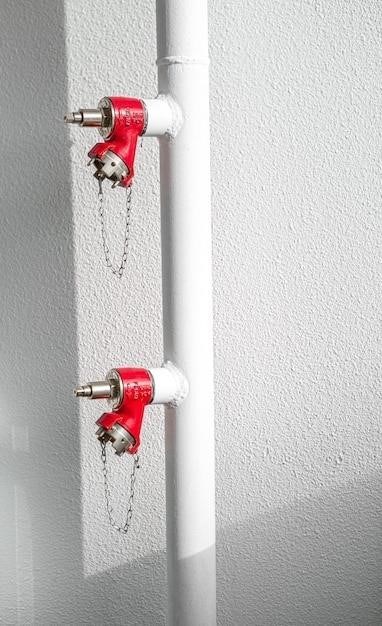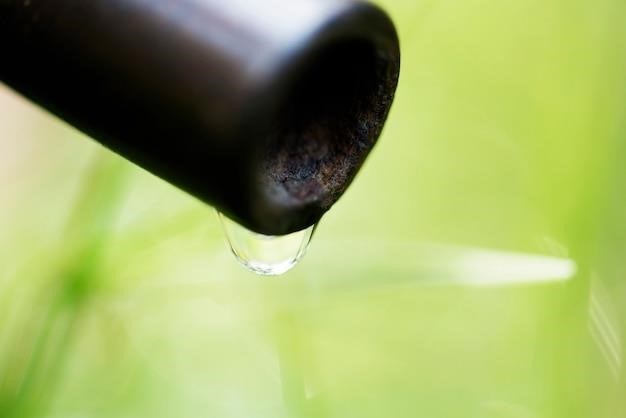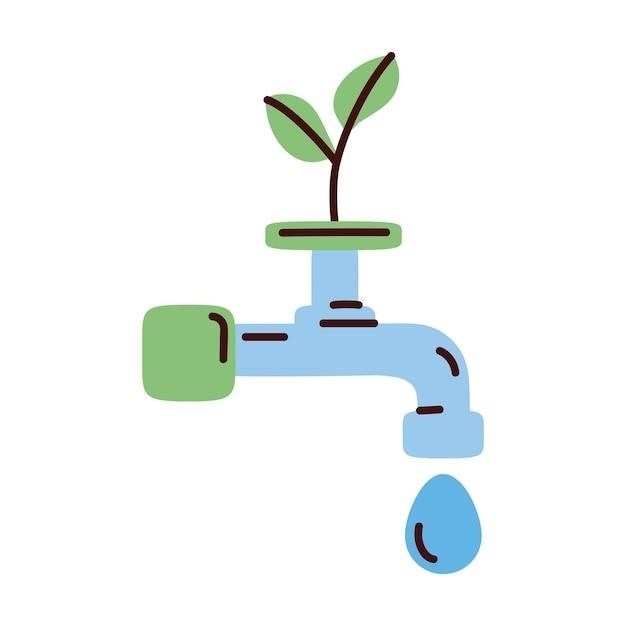
Troubleshooting a Non-Functional Sprinkler Valve
A manually inoperable sprinkler valve often indicates a blockage‚ a faulty solenoid‚ or a damaged diaphragm․ Initial checks should focus on clearing debris‚ inspecting the solenoid’s functionality‚ and assessing the diaphragm’s condition for proper operation․ Further investigation may involve examining electrical connections and water pressure․
Identifying the Problem⁚ Manual Operation Failure

Before diving into complex repairs‚ begin by confirming the valve’s inability to operate manually․ This initial step involves attempting to activate the valve using its manual override mechanism‚ if equipped․ If the valve remains unresponsive to manual attempts at activation‚ this points towards a mechanical or internal issue‚ rather than a problem with the irrigation system’s control panel or electrical supply․ Note the specific behavior⁚ does the valve handle move freely but produce no water flow‚ or is it completely stiff and immovable? This observation provides valuable initial clues for diagnosis․ Carefully assess the valve’s external condition․ Look for any obvious signs of damage‚ such as cracks or leaks in the valve body‚ or any signs of corrosion that could impede movement․ The absence of any visible damage suggests that the problem likely lies within the internal components of the valve‚ requiring more detailed inspection․ Document these initial observations‚ as they will help guide further troubleshooting steps․
Inspecting for Obstructions⁚ Debris Removal
A common culprit behind a non-functional sprinkler valve is the accumulation of debris within the valve’s internal mechanisms․ Sediment‚ sand‚ or other small particles can impede the valve’s operation‚ preventing it from opening or closing properly․ To inspect for obstructions‚ begin by turning off the water supply to the affected zone․ Then‚ carefully access the valve‚ usually located underground within the irrigation system․ Once you have isolated the valve‚ carefully remove it from its housing․ This may involve unscrewing or disconnecting various components․ Once removed‚ thoroughly inspect the valve’s internal components‚ paying close attention to any areas where debris might accumulate․ Look closely at the inlet and outlet ports‚ as well as any filter screens or internal passages within the valve mechanism․ Use a small brush‚ compressed air‚ or a gentle stream of water to remove any accumulated debris․ Take care not to damage any delicate internal parts during the cleaning process․ Once cleaned‚ reassemble the valve carefully‚ ensuring all components are properly seated․ Reinstall the valve and turn the water supply back on․ Test the valve’s operation to verify that the debris removal has resolved the issue․
Checking the Solenoid⁚ Cleaning and Testing
The solenoid is an electromagnetic component crucial for the valve’s operation; it’s responsible for controlling the flow of water․ If the sprinkler valve won’t turn on manually‚ a malfunctioning solenoid is a strong suspect․ Begin by visually inspecting the solenoid for any signs of damage‚ such as corrosion‚ cracks‚ or burnt components․ Carefully remove the solenoid from the valve body‚ taking note of its orientation and any connecting wires․ Once removed‚ use a soft brush or compressed air to gently remove any accumulated dust or debris․ Pay close attention to the solenoid’s plunger and its surrounding components․ After cleaning‚ carefully test the solenoid’s functionality using a multimeter to check its electrical continuity․ Ensure the power supply to the solenoid is active and correctly wired․ If the solenoid fails the continuity test‚ it may need replacement․ If the solenoid tests good‚ carefully reinstall it into the valve body‚ ensuring all connections are secure and properly aligned․ After reassembly‚ test the valve’s operation to confirm that the solenoid is functioning correctly․ If the problem persists‚ the issue may lie elsewhere within the valve’s mechanism․
Examining the Diaphragm⁚ Assessing for Damage or Sticking
The diaphragm is a flexible membrane within the valve that controls water flow․ Its proper function is critical for the valve’s ability to open and close․ A damaged or stuck diaphragm is a common cause of a manually inoperable sprinkler valve․ To inspect the diaphragm‚ you will need to access it by disassembling the valve body․ This usually involves removing screws or clamps securing the valve’s top cover․ Once access is gained‚ carefully examine the diaphragm for any signs of wear‚ tears‚ punctures‚ or stiffness․ A damaged diaphragm will often show visible cracks or holes․ A stuck diaphragm might appear intact but fail to flex properly․ If the diaphragm shows signs of damage‚ it will require replacement․ Before installing a new diaphragm‚ ensure the valve’s seating area is clean and free of debris․ A thorough cleaning may resolve minor sticking issues․ Lubricating the diaphragm’s contact points with a suitable lubricant‚ after cleaning‚ can also aid in smooth operation․ Always refer to the manufacturer’s instructions for specific guidance on diaphragm replacement and lubrication․ After reassembly‚ test the valve to verify its proper function․
Testing the Electrical Connection⁚ Solenoid Power Supply
The solenoid is an electrically operated component that controls the valve’s opening and closing․ A malfunctioning solenoid can prevent the valve from operating manually‚ even if the valve’s mechanical components are sound․ To test the electrical connection‚ first ensure the power supply to the solenoid is turned on․ Check the circuit breaker or fuse box for any tripped breakers or blown fuses related to the sprinkler system․ Next‚ use a multimeter to verify voltage is reaching the solenoid terminals․ If voltage is present‚ but the solenoid doesn’t activate‚ the solenoid itself may be faulty and require replacement․ If no voltage is detected‚ trace the wiring from the solenoid back to the control box‚ checking for any loose connections‚ broken wires‚ or corrosion․ Look for any signs of damage along the wiring path․ Loose connections can often be tightened; Broken wires may need to be spliced or replaced․ Corrosion should be cleaned and treated with an appropriate electrical contact cleaner; Always ensure power is disconnected before working on electrical components․ After making any repairs or replacements‚ retest the solenoid to confirm proper operation and that the valve now responds to manual operation․
Assessing Water Pressure⁚ Sufficient Supply for Operation
Inadequate water pressure can prevent a sprinkler valve from functioning correctly‚ even with a properly functioning solenoid and diaphragm․ Before assuming a mechanical failure‚ always check the water pressure at the valve․ A pressure gauge can be attached to a nearby spigot or directly to the valve itself (if possible‚ and while ensuring safety)․ Compare the reading to the manufacturer’s specifications for the valve; insufficient pressure may be indicated․ Low water pressure can be due to several factors‚ including a restricted main water line‚ a malfunctioning pressure regulator‚ or excessive water demand elsewhere in the system․ Check for leaks in the main water line or elsewhere in the sprinkler system; leaks significantly reduce system pressure․ Examine the pressure regulator to ensure it’s functioning correctly and set appropriately for the sprinkler system’s requirements․ If the pressure is consistently too low‚ consider contacting a plumber or irrigation specialist to diagnose the underlying cause․ Addressing low water pressure will resolve many sprinkler valve issues․ Once sufficient water pressure is confirmed‚ attempt to operate the valve manually again․ If the problem persists‚ further troubleshooting is necessary․
Investigating the Valve Body⁚ Checking for Leaks or Cracks
A compromised valve body can lead to malfunctions and prevent the sprinkler valve from turning on manually․ Carefully inspect the valve’s exterior for any visible cracks or damage․ Pay close attention to areas where the valve body connects to the piping‚ as these are common points of weakness․ Small cracks can often be detected by carefully running your fingers along the valve’s surface‚ feeling for any irregularities or rough spots․ If you find any cracks‚ the valve will likely need to be replaced‚ as these are difficult to repair effectively․ Additionally‚ check for any signs of leaks around the valve’s connections․ Even small leaks can indicate a problem with the valve’s seals or internal components․ Leaks may manifest as dampness or water staining around the valve’s base․ To check for leaks effectively‚ turn on the main water supply and observe the valve closely․ If leaks are detected‚ replacing the valve is recommended․ Never attempt to operate a valve with significant damage; doing so could exacerbate the problem․ A thorough visual inspection of the valve body is a crucial step in troubleshooting a manually inoperable sprinkler valve․ If the valve body is severely damaged‚ replacement is the best solution․

Considering External Factors⁚ Frozen Pipes or Root Intrusion
Before assuming internal valve problems‚ consider external factors that might hinder manual operation․ In colder climates‚ frozen pipes are a common culprit․ Ice expansion within the pipework can restrict water flow‚ preventing the valve from turning on‚ even manually․ Check exposed pipes for signs of frost or ice buildup․ If freezing is suspected‚ allow time for thawing or utilize appropriate thawing techniques․ Avoid using excessive heat‚ which could damage the pipes․ Another external factor is root intrusion․ Tree roots‚ over time‚ can penetrate underground pipes and obstruct water flow․ This often manifests as reduced water pressure or complete blockage‚ making manual valve operation impossible․ Inspect the area surrounding the valve for any signs of root growth near the pipes․ If root intrusion is suspected‚ professional assistance may be necessary for effective removal and pipe repair․ Addressing these external factors before proceeding with internal valve diagnostics is crucial for efficient troubleshooting․ Ignoring these external problems could lead to wasted time and effort spent on unnecessary internal valve repairs or replacements․
Advanced Troubleshooting⁚ Internal Valve Components
If preliminary checks reveal no external issues‚ delve into the intricacies of the valve’s internal mechanisms․ This requires careful disassembly‚ so consult diagrams or manuals specific to your valve model․ Proceed with caution‚ noting the position and arrangement of each component before removal․ Inside‚ you’ll find the valve’s core components⁚ the diaphragm‚ the seat‚ and potentially other internal seals or O-rings․ Inspect the diaphragm for tears‚ cracks‚ or signs of wear that might prevent proper sealing․ A damaged diaphragm can lead to leaks or impede the valve’s ability to shut off completely․ The valve seat‚ where the diaphragm rests‚ should be examined for debris or damage․ Accumulated sediment or corrosion can prevent a tight seal․ Similarly‚ inspect all internal seals and O-rings for deterioration․ Replace any damaged components with parts specifically designed for your valve model․ After reassembly‚ test the valve’s functionality․ If the problem persists after thorough inspection and replacement of damaged internal parts‚ professional assistance is recommended․
Seeking Professional Help⁚ When DIY Fails
Despite diligent troubleshooting‚ some sprinkler valve malfunctions defy DIY solutions․ Persistent issues‚ especially those involving complex internal components or unusual symptoms‚ warrant professional intervention․ A qualified irrigation technician possesses specialized knowledge‚ tools‚ and experience to diagnose and resolve intricate problems․ They can accurately identify the root cause‚ even if it involves hidden defects or unusual circumstances‚ such as unusual water pressure issues or unseen damage․ Professional help ensures efficient and effective repair‚ minimizing further damage and potential water waste․ Furthermore‚ engaging a professional often provides warranty coverage or protection from liability‚ offering peace of mind․ Calling a professional irrigation repair service is a wise investment when your DIY efforts reach a standstill‚ preventing further frustration and potential system damage․ They possess the expertise to handle intricate repairs‚ ensuring a long-lasting solution to your sprinkler valve problems․ Don’t hesitate to seek expert assistance when the problem extends beyond your capabilities․